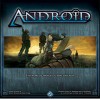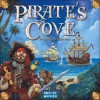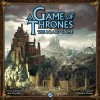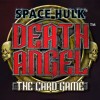drag badge here
drag badge here
Art of War
gamer level 3
1101 xp
1101 xp
followers
20
20
Use my invite URL to register (this will give me kudos)
https://boardgaming.com/register/?invited_by=a14st0r
profile badges
...
...
...
...
recent achievements

Baron / Baroness
Gain 10 total followers
Gain 10 total followers

Advanced Grader
Grade 100 more reviews or tips by clicking "Yes" or "No" in response to the question "Was this helpful?"
Grade 100 more reviews or tips by clicking "Yes" or "No" in response to the question "Was this helpful?"

Sophomore
Earn Professor XP to level up by completing Professor Quests!
Earn Professor XP to level up by completing Professor Quests!

Amateur Reviewer
Review 3 games and receive a total of 40 positive review ratings.
Review 3 games and receive a total of 40 positive review ratings.
























Runewars
Runewars is not what I expected it to be. Maybe fooled by the title, I was kind of hoping it was a wargame, or, at least a more conventional wargame.
Well, it is, actually, a game of accumulating runes and although some of them you will win by getting your hands dirty, it is quite possible to win the game without winning a single battle against another player.
In fact, it is quite common to go through the first half of the game without any significant conflict among the players. The map is big, and unless the setup was really bad, you can easily get by with the resources around you, but I’m ahead of myself here, let’s talk a little bit about the game in some detail.
Components:
Everything in the box is FFG quality. The miniatures are definitely smaller than other offers from the publisher, but they are nice enough and the small scale makes it easier to find a table in which the game can actually be played.
Make no mistake, when everything is set up it still will occupy a lot of space, but this is no World of Warcraft – The Board Game for sure.
Rules and rulebook:
Well, the rules are online so I won’t get into details here. But basically, each player controls a race in the Runebound universe (Humans, Elfs, Undead and Demons). The rulebook is much better than other FFG products, and although the rules have a lot of details, it is quite easy to find everything.
However, this is the kind of game that will make you go back to the rulebook while playing, especially on the first sessions. And from time to time, you can expect to find yourself browsing a faq or BGG looking for some clarification.
The fate deck:
Everything in the game revolves around the fate deck – a bunch of cards that determines: combat results, diplomacy and hero quests.
I like the system, but it generates some drawbacks:
1. The combat is less intuitive: if you know your unit only hits on a 6 when rolling a die, you intuitively know the odds you are facing, and you can make quick decisions with that information. With the fate cards, you have to learn the odds before making quick, but sound tactical decisions. Not a dealbraker, but the game is not short, and these little time eaters might add up.
Also, I’ve seen a bunch of players relying too much on turtling, taking the easy way out and avoiding making odds assessment, but just venturing forth after making sure they have an army as big s possible, which also drags the game a little.
2. Diplomacy is limited: Diplomacy is really useful to make monsters run. The odds to make an alliance with the monsters are too low and the amount of influence you usually have to spend are almost always better used elsewhere.
Counting the cards on the deck works to a certain extent and it is quick if you are looking for just the four successes, but I guess it is more useful in the Hero quests, since most of them will be successful if you get a neutral result as well.
3. It is not as quick as rolling dice.
The gameplay:
When it works, it works beautifully. In fact, I think the whole system is quite neat with a lot of borrowed things from Twilight Imperium and Nexus Ops, but it will sometimes fail to feel epic, because:
1. Someone might win before any significant battle happens. It is not that common, but it can happen, and it is frustrating to see all those units prepared to fight coming back to the box, without a scratch on them.
The map offers a lot of space for the factions and most of those spaces are not really worth to fight for until later in the game. The cities offer nice bonuses, but if every player has one (which is often the case) the motivation to conquer another diminishes. After all, you don’t want to be unprepared when those runes start to show up.
Also, I just think the board has too many mountains and rivers/lakes, which further delays battle, making terrain hard to navigate.
Neutral units are a nice idea, but fighting them is almost all the time very easy. The idea of having them in your army is also great, but it rarely happens and, guess what: they also delay the fight among the players.
Heroes are OK. I like the way they are implemented (specially when using the exploration tokens), but they are yet another excuse to not get into a fight, as you can invest on them to get some runes without losing troops.
No wonder the Elves are so popular, as they have the means to grow quickly on the influence run, although they are not that good in direct confrontation.
This makes Runewars look like a bad game, but it is far from the truth. You see, all those things are random and may or may not happen considering the initial setup, group thinking, experience with the game, etc. So chances are, the more you play the game, the better you will enjoy it.
Runewars is not too complex, but will certainly benefit from the players experience, because I think the right mindset is key to enjoy it. Battle between the players won’t always be the focus of the experience, but once you are passed that, you will find a game that offers some nice tactical and strategic choices to make.